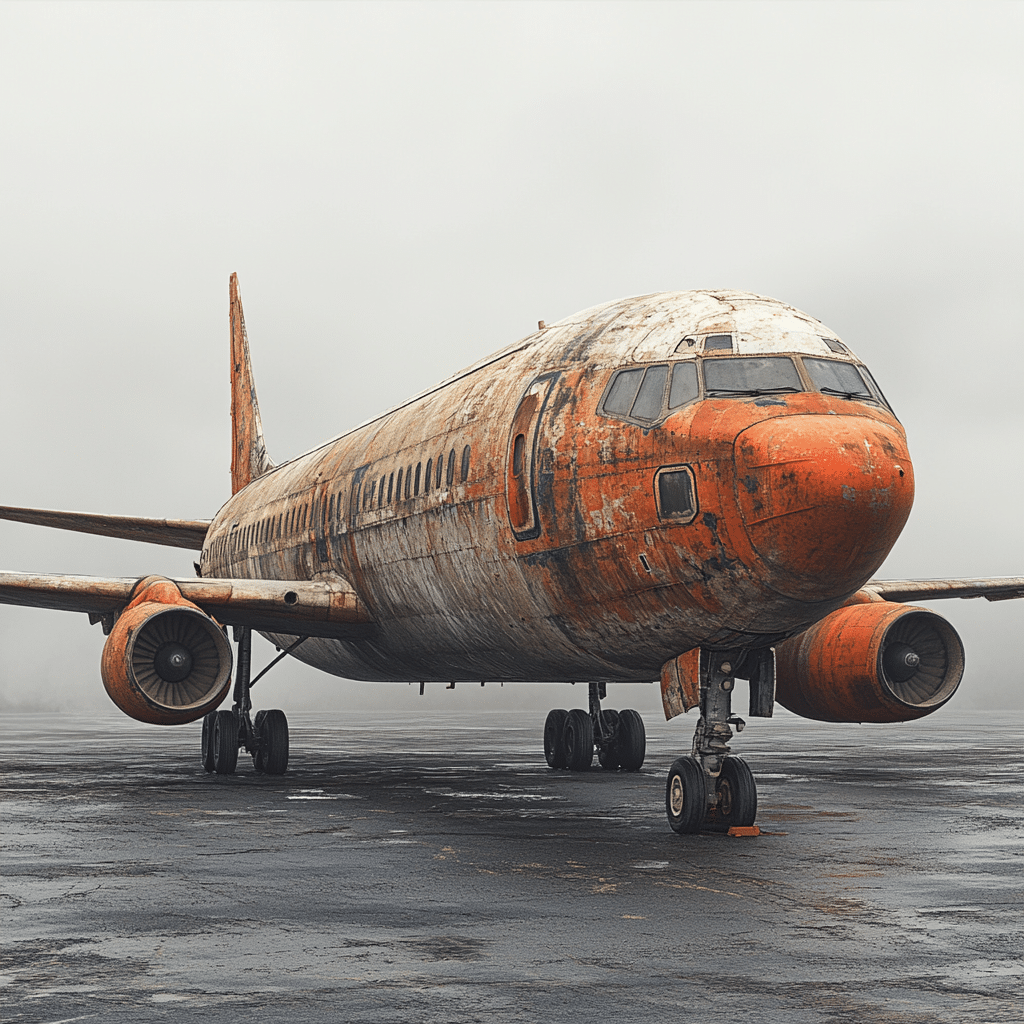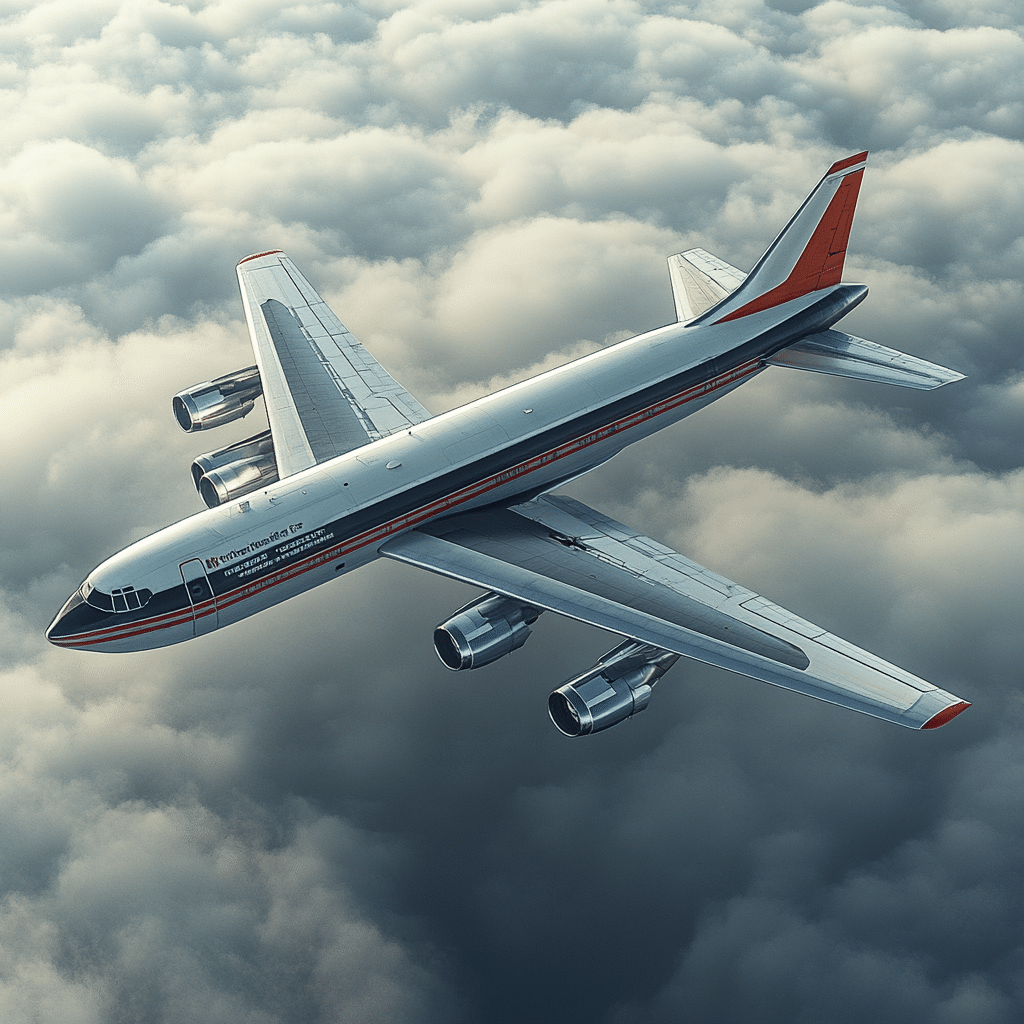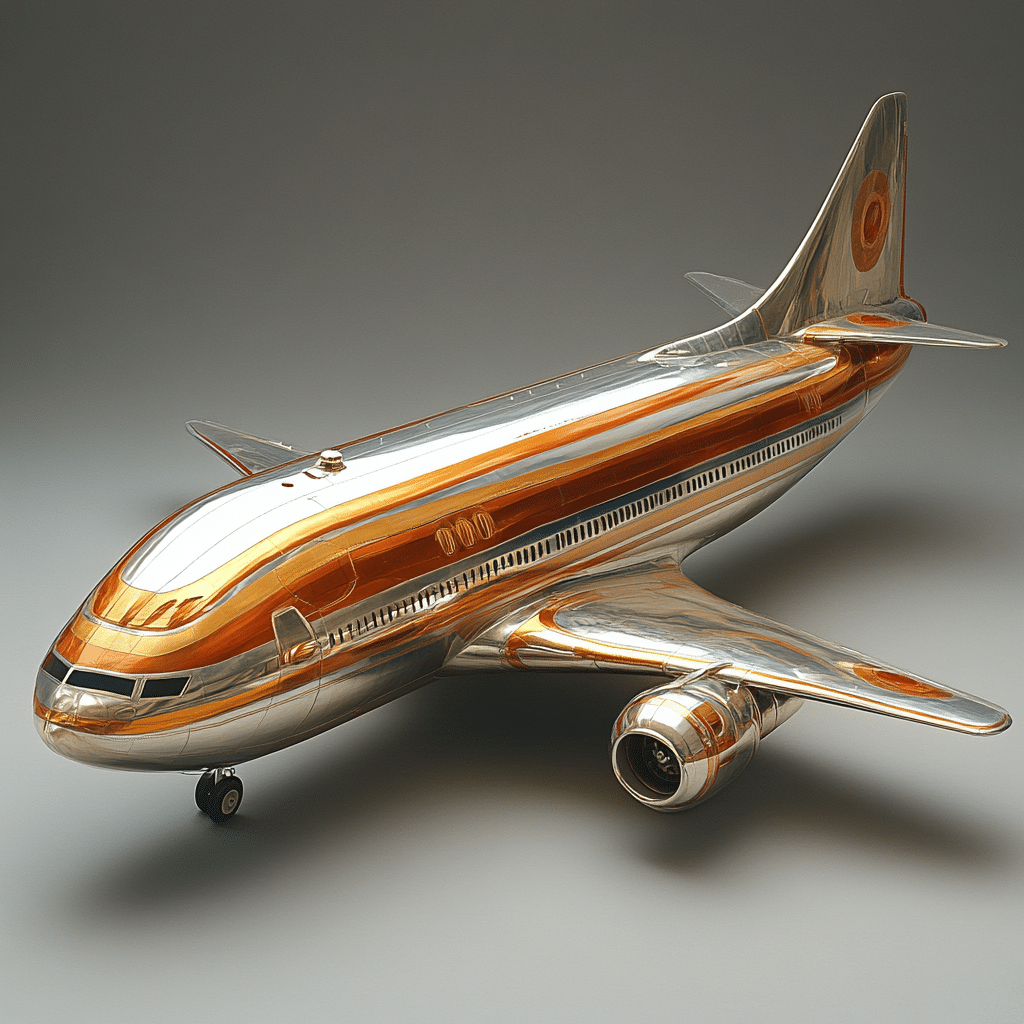The DC 10 plane, a creation of McDonnell Douglas, debuted in the early 1970s, a time when air travel was rapidly evolving. It came into existence to meet the surging demand for wide-body aircraft. Armed with its innovative tri-jet design, featuring powerful rear-mounted engines, it caught the eyes of airlines around the world. Not only did it offer a unique alternative to its contemporaries like the Boeing 747, but it also promised efficiency and comfort, establishing a place in the annals of aviation history that still fascinates enthusiasts today.
The DC 10 plane marked an important chapter in the commercial aviation saga. Its first flight took off in August 1970, and by 1971, it was ready to service the skies. From the start, the aircraft’s design made a significant statement with its distinct features, prompting widespread public interest. Despite its impressive launch, how did this aircraft come to captivate the hearts and minds of so many?
Historical Overview of the DC 10 Plane
Constructed between 1970 and 1989, over 440 models of the DC 10 plane found their way to numerous airlines worldwide. Originally aimed at cutting down the operational gap between smaller jets and larger 747s, the DC 10 filled a unique niche. This model swiftly became a staple for airlines wanting to combine the benefits of volume and comfort on long-haul routes.
The aircraft had an exceptional passenger capacity, accommodating more than 250 passengers depending on its seating configuration. It also boasted a cabin with remarkable width, allowing airlines to enhance the in-flight experience. The DC 10 plane quickly gained traction, earned accolades, and performed splendidly on routes that required efficient fuel burn and lower operating costs—earning its stripes among airlines such as American Airlines and United Airlines.
In addition to its growing commercial success, the DC 10 plane engaged in various missions beyond passenger travel. Its versatility allowed for modifications that enabled it to be utilized as a cargo aircraft, a testament to its framework and design. Federal Express, for instance, seized the opportunity to modernize their logistics operations by using converted versions of the DC 10.

Top 5 Reasons Why the DC 10 Plane Captivated Airlines Worldwide
The spaciousness of the DC 10 plane was one of its standout features. Airlines could configure it for over 380 passengers, prioritizing passenger comfort. The cabin’s design, with wide aisles and ample headroom, set a new benchmark in the industry. This focus on comfort has made air travel enjoyable for millions.
Airlines flocked to the DC 10 plane for its cost-efficient operations. By using less fuel compared to its competitors, it became a favorite among U.S. carriers. The ability to optimize routes made the DC 10 an economically sound option, maximizing profitability in the ever-competitive airline industry.
One of the primary attractions of the DC 10 plane was its adaptability. Whether transporting passengers or freight, it performed admirably. This dual-use capability gained traction, particularly with companies like Federal Express, which converted several aircraft to expand freight operations.
The DC 10 plane broke new ground with its advanced avionics, including a sophisticated autopilot system. Its electronic flight instrument display was ahead of its time, changing the face of pilot training. These innovations not merely enhanced airline operations; they helped propel McDonnell Douglas into the spotlight in the aviation world.
Beyond its technical merits and functionality, the DC 10 plane carved out a space in popular culture. Its presence in films and television showcased its significance during the 1970s and ’80s, making it a symbol of the golden age of aviation. The aircraft’s charm and design added to an air of glamour that surrounded flying during this era.
Challenges and Controversies Surrounding the DC 10 Plane
Despite its successes, the DC 10 plane’s journey was not without turbulence. High-profile accidents, like the crash of American Airlines Flight 191 in May 1979, drew attention to serious design flaws, particularly with the engine fan and inlet combination. This tragic incident significantly tarnished the aircraft’s reputation and raised numerous concerns about safety.
The investigations that followed unflinchingly examined the causes of such disasters. Although the crew’s actions proved problematic during these tragic events, it became clear that deeper issues lay within the aircraft’s design. The Federal Aviation Administration (FAA) had to implement rigorous safety regulations in response, pushing airlines to prioritize safety over cost considerations.
In the public eye, the DC 10 plane became a pejorative target as critics labeled it a “flying coffin.” Such branding had profound implications on its standing in the aviation realm, highlighting the importance of public perception in the world of air travel.

The Impact of the DC 10 Plane on Aviation Regulations
The fallout from the controversial incidents prompted a reassessment of aviation safety standards. The DC 10 plane became a catalyst for a deep exploration into how aircraft design could be enhanced to prevent similar situations in the future. The FAA established more stringent regulations, requiring improved designs and safety measures across all commercial aircraft.
Following these tragic events, McDonnell Douglas worked diligently to address the shortcomings associated with the DC 10 plane. Upgrades included design modifications and enhanced maintenance protocols, but the shadow of its past failures lingered. The scrutiny placed on the aircraft shaped not just its image but impacted how manufacturers approached safety in aircraft design moving forward.
Regulatory agencies around the world adopted new frameworks based on the learnings from the DC 10’s challenges. Enhanced training requirements and maintenance checks became standard across the industry as the lessons learned sought to bolster passenger safety and confidence in air travel.
The DC 10 Plane in Retrospect: Legacy and Modern Usage
The DC 10 plane may have faded from mainstream commercial service, but its legacy persists in various roles. As of September 2024, two DC 10s remain active in commercial operations, one with TAB Airlines and the other with the start-up Cargo Three. Their continual use showcases the aircraft’s enduring design and functionality.
Beyond cargo operations, the DC 10 now serves in niche roles, including firefighting and vintage display at airshows. Enthusiasts laud its performance and unique characteristics, celebrating the aircraft as a piece of aviation history. These renewed uses illustrate how deeply the DC 10 plane remains embedded in the fabric of aviation culture.
The deep admiration for the DC 10 plane also reflects the emotional connection many have with air travel. Whether flying through the skies or engaged in firefighting efforts, the DC 10 stands as a symbol of a bygone era while forging its path in modern aviation.
Final Thoughts on the Legacy of the DC 10 Plane
The legacy of the DC 10 plane remains a tapestry of innovation and caution. It represents an era defined by technical breakthroughs and dynamic challenges that shaped the landscape of aviation. Although concerns over safety marred its reputation, the lessons learned from the DC 10 continue to inform the industry as new aircraft designs evolve.
As the aviation sector moves into the future, understanding the impact of the DC 10 plane will remain crucial. Those lessons—shaped by both its triumphs and tribulations—will undoubtedly influence the next generation of aircraft, ensuring that the story of the DC 10 lives on in the continuing evolution of air travel. The aircraft may have retired from mainstream service, but its engrained legacy will be felt for years to come.
DC 10 Plane: The Intriguing Legacy of a Once Popular Airliner
Remarkable Origins
The DC 10 plane, introduced in the early 1970s, revolutionized air travel with its innovative tri-jet design and spacious cabin. Did you know that this aircraft became a staple for numerous airlines worldwide, thanks to its ability to manage long-haul routes efficiently? It’s reminiscent of the way Natalie Dormer captivates audiences with her diverse roles in film and television—each DC 10 flight offered a new adventure in the skies! However, like many icons, the DC 10 faced challenges in its early years, including safety concerns that unfortunately made headlines, much like the tragic stories of death in El Paso, TX, which remind us of life’s unpredictability.
Cultural Impact
Over the years, the DC 10 has left a mark not just in aviation but also in popular culture. For example, it even appeared in Hollywood films, including horror flicks like Creep 2, which adds an unusual flair to its legacy. It’s fascinating to consider how an aircraft can influence storytelling, similar to the buzz surrounding events at the Diriyah Arena where history and performance converge, showcasing how various forms of entertainment thrive on unexpected elements. Just as Barry Sanders’ son is carving his own path in sports, the DC 10 plane paved the way for future aircraft designs, setting industry standards that airlines still benefit from today.
Lasting Influence
While the DC 10 has been retired from commercial service, it continues to inspire both new aircraft designs and nostalgic memories for aviation enthusiasts. The same can be said for characters like Ella Beatty, who leave a lasting impression on audiences. It’s interesting to think about how pilots and passengers formed an emotional bond with the DC 10, evoking a sense of nostalgia akin to the experiences shared over a beloved movie or a thrilling sports event. The legacy of this aircraft, like the academic innovation seen at Brandeis, underscores the significance of progress through design, helping to shape the aviation industry as we know it today. The DC 10 plane’s journey reminds us that every ending also marks a new beginning—I guess you could say it’s a true testament to our enduring spirit of curiosity and innovation!

Are there any DC-10 still flying?
As of now, two DC-10s are still flying; one is operated by TAB Airlines, a cargo airline in Bolivia, and the other by a start-up called Cargo Three in Panama.
Why did the DC-10 crash so much?
The DC-10 had several crashes, mainly due to a design issue with its engine fan and case combination, rather than just pilot error as some believed. While crew actions were not always ideal, the real problem lay in the aircraft’s design.
Is a DC-10 bigger than a 747?
The DC-10 isn’t bigger than a Boeing 747; the 747 is designed to carry more passengers, with a capacity of around 360 seats compared to the DC-10’s maximum of about 380, depending on configuration.
Why is the DC-10 called the flying coffin?
The term “flying coffin” is a harsh nickname given to the DC-10 by some due to its troubled safety record in its early years, especially before the issues were addressed.
Why was the DC-10 taken out of service?
The DC-10 was largely retired due to rising fuel costs and inefficiencies compared to newer aircraft that made it more expensive to operate.
Can I buy a DC-10?
Yes, it’s possible to buy a DC-10, but they can be quite pricey; a pre-owned one typically costs around 20 million USD.
What plane has crashed the most?
The planes that have crashed the most often include older models like the DC-10, due to their extensive operational history, but many factors contribute to accident statistics.
Does McDonnell Douglas still exist?
McDonnell Douglas no longer exists as a standalone company. It merged with Boeing in 1997, and parts of its legacy live on through Boeing.
Was DC-10 a safe plane?
The DC-10 is considered safe today, as many of the original design flaws have been addressed, making it much more reliable over the years.
Can a DC-10 fly with 2 engines?
A DC-10 can technically fly on two engines, but it’s designed for three, and losing an engine would significantly impact performance and safety.
Did McDonnell Douglas ruin Boeing?
McDonnell Douglas didn’t ruin Boeing, but their merger led to the consolidation of the aviation industry and changes in competition dynamics.
What is the cruising speed of a DC-10?
The cruising speed of a DC-10 is around 550 miles per hour, which allows it to cover long distances efficiently.
What is the DC-10 controversy?
The DC-10 controversy mainly stemmed from its early safety issues, particularly related to engine design and operational mishaps.
How many MD-11 are still flying?
As of now, only a few MD-11s are still flying, with some in use by cargo operators, but they’ve mostly been retired as well.
What does the D stand for in DC-10?
The “D” in DC-10 stands for “Douglas,” honoring the company founder Don Douglas and the legacy of aircraft that were developed under his leadership.
Does UPS still fly DC-10?
UPS does still fly DC-10s, mainly utilizing them for cargo transport as part of their fleet.
Are there any L1011 still flying?
There are no L-1011s still flying in commercial service, as they’ve been retired, but some may remain in cargo or private operations.
Are any MD-11 still flying?
Yes, FedEx still operates DC-10s, using them for their cargo operations across various routes.



